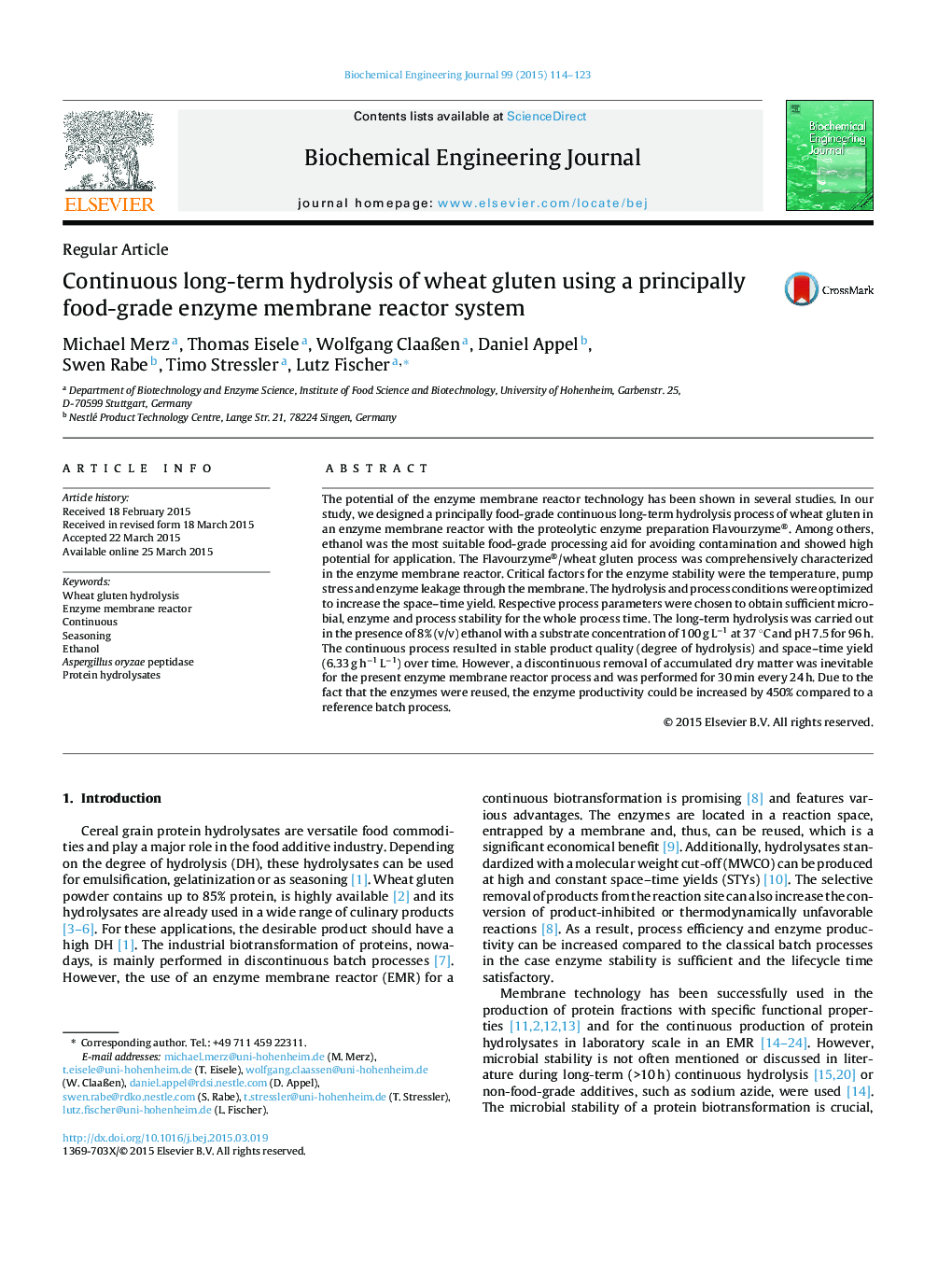| کد مقاله | کد نشریه | سال انتشار | مقاله انگلیسی | نسخه تمام متن |
|---|---|---|---|---|
| 2931 | 143 | 2015 | 10 صفحه PDF | دانلود رایگان |
• Ethanol as a microbial hurdle in a continuous protein hydrolysis process.
• Comprehensive study of parameters which effect the operational enzyme stability.
• Long-term hydrolysis for 96 h by using the enzyme membrane reactor technology.
• Increased space–time yield (85%) compared to a batch process.
• Increased enzyme productivity (450%) compared to a batch process.
The potential of the enzyme membrane reactor technology has been shown in several studies. In our study, we designed a principally food-grade continuous long-term hydrolysis process of wheat gluten in an enzyme membrane reactor with the proteolytic enzyme preparation Flavourzyme®. Among others, ethanol was the most suitable food-grade processing aid for avoiding contamination and showed high potential for application. The Flavourzyme®/wheat gluten process was comprehensively characterized in the enzyme membrane reactor. Critical factors for the enzyme stability were the temperature, pump stress and enzyme leakage through the membrane. The hydrolysis and process conditions were optimized to increase the space–time yield. Respective process parameters were chosen to obtain sufficient microbial, enzyme and process stability for the whole process time. The long-term hydrolysis was carried out in the presence of 8% (v/v) ethanol with a substrate concentration of 100 g L−1 at 37 °C and pH 7.5 for 96 h. The continuous process resulted in stable product quality (degree of hydrolysis) and space–time yield (6.33 g h−1 L−1) over time. However, a discontinuous removal of accumulated dry matter was inevitable for the present enzyme membrane reactor process and was performed for 30 min every 24 h. Due to the fact that the enzymes were reused, the enzyme productivity could be increased by 450% compared to a reference batch process.
Journal: Biochemical Engineering Journal - Volume 99, 15 July 2015, Pages 114–123
